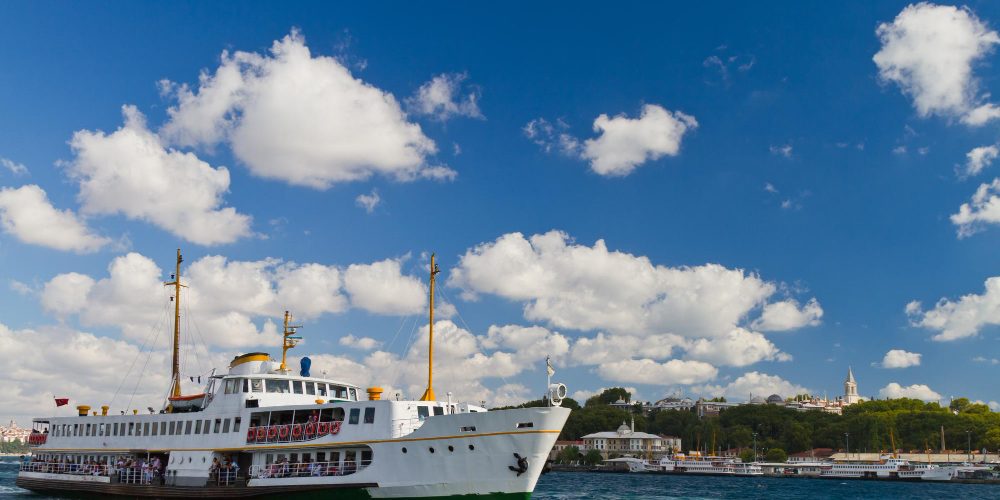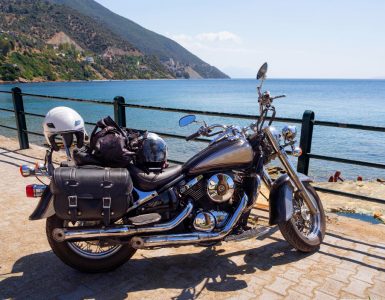Spain has a large number of ferry routes connecting its many islands and coastal regions. Whether you’re looking to travel between the mainland and the Balearic or Canary Islands, or between two of the smaller islands, there’s sure to be a ferry service that can take you where you need to go. In this article, we’ll introduce some of the most popular ferry routes in Spain and give you all the information you need to know about Ferries in Spain
Booking Ferries in Spain
Looking to travel by ferry in Spain? the special search engine (below) makes booking your trip easy and stress-free. Simply enter your travel details into the search engine and it’ll show you the best ferry routes and prices. It will also provide you with all the information you need to know about each ferry operator, so you can make an informed decision about which one is right for you.
The Different Types of Ferries in Spain
There are many different types of ferries that operate in Spain. Below, we have listed some of the most popular types of ferries that you may come across during your travels in Spain.
1. Car Ferry
A car ferry is a type of ferry that is specifically designed to transport vehicles from one point to another. These types of ferries are very popular in Spain, as they provide an easy and convenient way to travel between the mainland and the various islands off the coast.
2. Passenger Ferry
A passenger ferry is a type of ferry that carries passengers only – no vehicles. These types of ferries are typically used for shorter journeys, such as between two towns or cities located on different sides of a river or bay.
3. High-speed Ferry
A high-speed ferry is a type of ferry that uses special technology to travel at high speeds – typically over 50 knots (57 mph). These types of ferries are becoming increasingly popular in Spain, as they can drastically reduce travel times between destinations.
4. Catamaran Ferry
A catamaran ferry is a type of Ferry that uses two hulls (instead of just one) to provide stability.
The Pros and Cons of Taking a Ferry in Spain
There are a few things to consider before taking a ferry in Spain. The pros are that you can take your car with you on the ferry, which can be helpful if you’re planning on driving around Spain. The cons are that the ferry ride can be rough and there is always the potential for delays. Overall, taking a ferry in Spain is a great way to see the country and its beautiful coastline.
The Most Popular Ferry Routes in Spain
Spain is one of the most popular tourist destinations in Europe, and for good reason! With its stunning beaches, amazing food, and rich culture, there is something for everyone in Spain. And what better way to see the country than by ferry?
There are many different ferry routes that you can take in Spain, depending on where you want to go. Here are some of the most popular ferry routes in Spain:
1. Barcelona to Majorca: This is one of the busiest ferry routes in Spain as it connects two of the most popular tourist destinations in the country. The journey takes around 2 hours and 30 minutes, and there are multiple ferries departing every day.
2. Alicante to Ibiza: This route is popular with party-goers and those looking to enjoy the sunny Spanish coastline. The journey takes around 4 hours, and there are several ferries departing each day.
3. Valencia to Palma: This is another popular route connecting two major Spanish cities. The journey time is around 3 hours, and there are regular ferries departing throughout the day.
4. Malaga to Melilla: This ferry route takes you from the sunny south of Spain to the African city of Melilla.
How to Choose the Right Ferry for Your Trip
There are many factors to consider when choosing a ferry for your trip to Spain. Here are a few things to keep in mind:
-The type of ferry. There are two main types of ferries in Spain- high-speed and car ferries. High-speed ferries are great if you’re looking to get to your destination quickly, but they’re also more expensive. Car ferries are slower but can be a more economical option, especially if you’re traveling with a vehicle.
-The route. There are many different ferry routes in Spain, so be sure to research the one that best suits your needs. Consider the departure and arrival times, as well as the length of the journey.
-The price. Ferries can vary greatly in price, so it’s important to compare rates before booking. Keep in mind that discounts may be available for seniors, students, and families.
-The amenities. Some ferries offer more amenities than others, such as restaurants, bars, and shops. If these things are important to you, be sure to check before booking.
Tips for Taking a Ferry in Spain
Spain is a beautiful country with plenty to see and do. If you’re planning on taking a ferry while you’re there, here are a few tips to keep in mind.
1. Check the weather forecast before you go. If it’s going to be a particularly windy day, it might be best to postpone your ferry ride.
2. Bring along some snacks and drinks, as there may not be any food available on board.
3. Have your camera ready to capture the stunning views of the coastline as you sail along.
4. Finally, relax and enjoy the ride – it’s sure to be an unforgettable experience!
What are ferries in Spain?
Ferries in Spain are a means of transport that connect the mainland with the Balearic and Canary Islands, as well as with Morocco. They usually depart from the port of Barcelona, Valencia or Alicante.
There are different types of ferries in Spain, depending on the company that operates them and the route they take. The most common type is the car ferry, which allows you to take your vehicle on board. This is ideal if you’re planning to explore the island you’re visiting by car.
Another type of ferry is the high-speed ferry, which is faster but doesn’t allow vehicles on board. These are ideal if you’re just looking to get to your destination quickly and don’t need to worry about taking a car.
Whatever type of ferry you choose, make sure to do your research and compare prices before booking. This will ensure you get the best possible deal and have a comfortable journey.
The Different Types of Ferries in Spain
There are different types of ferries in Spain, depending on the route that you want to take. For example, there are high-speed ferries that can take you from one point to another quickly, but they may be more expensive. There are also slower ferries that will take longer to get you to your destination, but they may be cheaper. You will need to decide which type of ferry is best for you based on your budget and travel plans.
Ferries from Barcelona to Mallorca
Spain is a large country with many different regions, and each region has its own unique transportation options. One of the most popular methods of transportation in Spain is by ferry. Ferries connect the mainland with the Balearic Islands, which include Mallorca, Menorca, and Ibiza.
The island of Mallorca is one of the most popular tourist destinations in Spain. Many people take ferries from Barcelona to Mallorca in order to enjoy the beautiful beaches and resorts. The journey by ferry takes about 3 hours and 30 minutes, and there are several companies that offer this service.
If you are planning a trip to Spain, be sure to check out the various ferry options in order to get the best deal for your travel needs.
Ferries from Alicante to Ibiza
There are many reasons to take a ferry from Alicante to Ibiza. The most obvious is to save on airfare – with a ferry, you can bring your car and all your belongings with you, which is not always possible when flying. But there are other reasons to choose a ferry over a plane or a train. Ferries offer a more relaxed way to travel, and you can enjoy the scenery as you sail across the Mediterranean Sea.
If you’re looking for a budget-friendly way to get to Ibiza, then taking the ferry is definitely the way to go. And if you’re looking for an adventure, then why not add a little excitement to your journey by taking the ferry?
Ferries from Valencia to Palma
Looking for a way to travel between Valencia and Palma without having to take a long flight? Why not take a ferry! Ferries between these two Spanish cities are affordable and convenient, making them a great option for travelers.
There are several ferry companies that operate between Valencia and Palma, so be sure to do your research to find the one that best suits your needs. Once you’ve booked your ferry ticket, all you need to do is relax and enjoy the ride!
Ferries from Malaga to Melilla
Looking for a way to travel from Malaga to Melilla without having to take a long and arduous road trip? Why not consider taking a ferry! Ferries run regularly between these two Spanish cities, making the journey much more pleasant and manageable. Plus, you’ll get to enjoy some stunning views of the Mediterranean Sea along the way.
Ferries from Barcelona
The port city of Barcelona is home to many ferry routes that can take you to other parts of Spain or even across the Mediterranean. Whether you’re looking to explore the Spanish coastline or visit neighboring countries like France or Italy, taking a ferry from Barcelona is a great option.
There are a few things to keep in mind when planning your ferry trip from Barcelona. First, check the schedules of the different companies operating routes to your destination; second, make sure you have all the necessary documents for boarding; and third, be aware of any luggage restrictions that may be in place.
Once you have your ferry trip planned, sit back and enjoy the ride!
Ferries from Alicante
Alicante is a beautiful city located on the southeast coast of Spain. The city is home to many tourist attractions, including the Castle of Santa Bárbara, which overlooks the city, and the Alcázar de la Concepción, a Moorish fort. Alicante is also a popular destination for ferries from other parts of Spain.
There are many different ferry companies that offer service to and from Alicante. The most popular company is Trasmediterranea, which offers service to various destinations in Spain, including Barcelona, Valencia, and Mallorca. Balearia is another popular choice, with service to destinations such as Ibiza and Majorca. There are also several smaller ferry companies that operate in Alicante.
The journey by ferry from Alicante to Barcelona takes about 10 hours. The journey by ferry from Alicante to Valencia takes about 3 hours. The journey by ferry from Alicante to Mallorca takes about 8 hours.
Ferries from Valencia
Valencia is one of the largest cities in Spain, and is also a major port city. As such, there are many ferries that operate from Valencia. These ferries offer service to various destinations around Spain, as well as to other countries in Europe.
Valencia is a great place to start your journey by ferry. The city has a lot to offer in terms of attractions and activities. And, with a ferry, you can easily explore other parts of Spain or even venture out to other countries in Europe. So, if you’re looking for a way to travel around Spain or Europe, consider taking a ferry from Valencia.
Ferries from Mallorca
Looking for a quick and easy way to get from Mallorca to the mainland? Why not take a ferry! Ferries in Spain are a popular and affordable way to travel, and there are plenty of companies offering service to and from the island.
Here are just a few of the many reasons to consider taking a ferry to Spain:
-They’re fast: most ferries make the trip from Mallorca to the mainland in less than 2 hours.
-They’re affordable: tickets start at just a few Euros.
-You can bring your car: this is great news if you’re planning on exploring Spain by road.
-There’s no need to fly: avoiding airports can be a huge stress reliever.
So, what are you waiting for? Check out one of the many ferry companies operating in Spain and book your trip today!
Ferries from Ibiza
Spain is a large country with many islands, so there are plenty of opportunities to take a ferry. Ibiza is one of the most popular tourist destinations in Spain, and there are several companies that operate ferries from Ibiza to the mainland. Balearia is one of the most popular companies, and they have a website where you can check schedules and prices.
What to Expect When Taking a Ferry in Spain
Spain is a large country with plenty of coastline, making it the perfect place to take a ferry. Whether you’re looking to travel between islands or across the country, there are plenty of ferry options available. Here’s what you can expect when taking a ferry in Spain.
Ferry schedules can be found online and at most tourist offices. They vary depending on the route, but most ferries run daily. Tickets can be purchased in advance or on the day of travel. It’s important to arrive at the port early, as boarding often starts 30 minutes before departure.
Once on board, you’ll find plenty of seating options, as well as restaurants, cafes, and bars. There are also usually shops on board selling souvenirs and other items. The ferry ride itself is usually smooth and relaxing, providing stunning views of the coastline as you cruise along.
If you’re planning on taking a ferry in Spain, be sure to research your options in advance and arrive early on the day of travel. With a little planning, you’re sure to have a smooth and enjoyable journey.
How to Choose the Right Ferry for Your Trip
When it comes to choosing a ferry for your trip to Spain, there are a few things to keep in mind. First, think about what type of trip you’re taking. Are you going on a day trip or an extended vacation? If you’re only going for a day, you’ll want to choose a ferry that goes directly to your destination and doesn’t make any stops along the way. If you’re taking an extended trip, you may want to consider a ferry that makes multiple stops so you can explore different parts of the country.
Next, consider how many people you’re traveling with. If you’re traveling alone, you’ll have more flexibility in terms of which ferry you choose. However, if you’re traveling with a group, you’ll want to make sure the ferry you choose can accommodate everyone in your party.
Finally, think about your budget. Ferries can vary significantly in price, so it’s important to find one that fits within your budget. Keep in mind that the price of your ferry ticket will also include the cost of your accommodations on board the ferry.
By keeping these factors in mind, you’ll be able to choose the right ferry for your trip to Spain.
The Different Types of Ferries
There are different types of ferries that operate in Spain. Some of the most popular types include:
– Passenger Ferries: These are the most common type of ferry and they transport people and their vehicles between two points.
– Cargo Ferries: These ferries transport goods and cargo between two points.
– High-Speed Ferries: These ferries are designed for high-speed travel and they can reach speeds of up to 50 knots.
– Luxury Ferries: These ferries offer a more luxurious experience with features such as restaurants, bars, and shops onboard.
Pros and Cons of Ferries in Spain
There are many ways to travel between the islands of Spain, but one of the most popular is by ferry. Ferries offer a unique way to travel, with many people finding them to be a more relaxed and enjoyable experience than flying or taking the train. However, there are also some drawbacks to using ferries in Spain, which you should be aware of before you book your ticket.
Pros:
-Ferries are a great way to see the coastline and islands of Spain.
-They are usually cheaper than flying.
-They are often faster than taking the bus or train.
-You can bring your own food and drink on board, making it a more affordable way to travel.
-Ferries offer a more relaxed atmosphere than other forms of transport.
Cons:
-The schedule of ferries can be subject to change, so it is important to be flexible when travelling by ferry.
-Weather conditions can sometimes delay or cancel ferry services.
-There can be long queues at peak times.
-Ferries can be crowded, particularly during the summer months.
What to Expect on a Ferry?
Spain is a beautiful country with so much to offer visitors. One popular way to travel around Spain is by ferry. Ferries in Spain can be a great option for those looking for an affordable and convenient way to see the country. Here are some things to keep in mind if you’re planning on taking a ferry in Spain:
1. Check the schedule in advance. Ferries in Spain typically run on a set schedule, so it’s important to check the timetable before making your plans. This will help you avoid any potential delays or disruptions to your journey.
2. Make sure you have your ticket. Tickets for ferries in Spain can be purchased online or at the port of departure. Be sure to have your ticket ready before boarding the ferry.
3. Expect a security check. All passengers and luggage will be subject to a security check before boarding the ferry. This is standard procedure and is nothing to worry about.
4. Relax and enjoy the ride! Once you’re on board, take some time to relax and enjoy the journey. Sit back, enjoy the scenery, and make the most of your time on the ferry.
Ferry Tips and Tricks
Spain is world-renowned for its stunning coastline, and what better way to enjoy it than by taking a ferry? Whether you’re looking to relax and soak up the sun or explore new places, our tips and tricks will help you make the most of your ferry experience in Spain.
1. Book in advance: Ferries in Spain can get crowded, so it’s always a good idea to book your tickets in advance. This way, you can be sure to get a spot on the ferry of your choice.
2. Bring food and drink: Most ferries have restaurants and bars onboard, but these can be expensive. Save money by bringing your own food and drink onboard with you.
3. Take advantage of the views: The views from a ferry are some of the best in Spain. Make sure to take some time to enjoy them!
4. Meet new people: Ferry rides are a great opportunity to meet new people. Talk to your fellow passengers and learn about their stories.
5. Have fun!: Above all, remember to have fun! A ferry ride is a great way to see Spain and relax at the same time.
Alternatives to Ferries in Spain
There are many ways to travel to Spain, and ferries are just one option. If you’re looking for alternatives to ferries, there are plenty of options. You can fly on one of Spain’s domestic flights, or hire a car in Spain or take a train or bus or even rent a motorcycle in Spain. No matter how you choose to travel, there are plenty of optionsof transportation in Spain.
Conclusion
Overall, Spain’s ferry system is reliable and efficient, with a few exceptions. If you’re planning on taking a ferry in Spain, it’s important to do your research ahead of time so that you know which route to take and which company to use. With a little preparation, you’ll be able to enjoy a stress-free journey.











Add comment